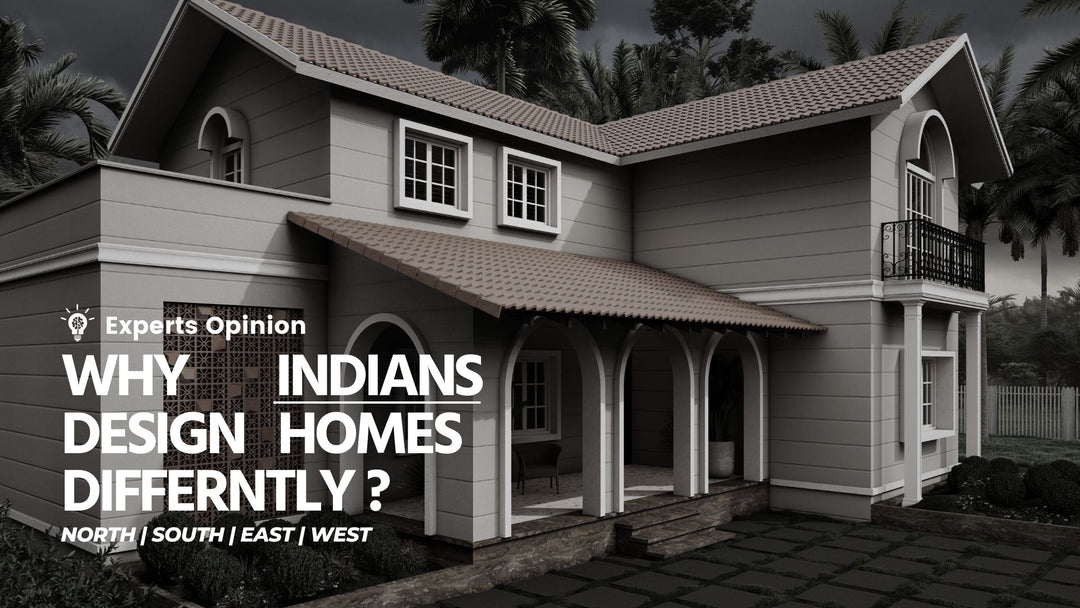Trends in Sustainable and Eco-Friendly Design for Indian Homeowners Use
If you're an Indian homeowner looking to create a stylish and environmentally friendly home, sustainable and eco-friendly design may be the perfect solution. This trend involves using materials and techniques that are environmentally friendly, such as energy-efficient appliances, natural finishes, and recycled materials.

1. Energy-Efficient
One of the key components of sustainable design is energy-efficient appliances. These appliances use less energy to operate, which can help to reduce your home's carbon footprint and save you money on energy bills. In India, where electricity costs can be high, energy-efficient appliances can make a significant difference in your energy consumption and expenses. Look for appliances with the Energy Star label, which indicates that they meet strict energy efficiency standards.
For example, you could invest in a Samsung Energy Star-certified refrigerator, which uses up to 15% less energy than a traditional model. Or you could consider an LG Energy Star-certified washing machine, which uses up to 50% less water and energy.

2. Natural Finishes
But it's not just about the appliances. You can also use natural finishes, such as wood, stone, and wool, to add warmth and texture to your space while being environmentally friendly. These materials are renewable and biodegradable, and they can create a healthy indoor environment by not off-gassing harmful chemicals. In a country with a rich tradition of using natural materials in design, incorporating natural finishes can add a touch of cultural authenticity to your home.
For example, you could use Kajaria natural stone tiles for your flooring. Or you could opt for an Interface recycled wool carpet, which is made from recycled materials and helps to reduce waste.
Incorporating recycled materials is another way to reduce waste and decrease your home's environmental impact. From recycled glass countertops to recycled plastic flooring to reclaimed wood, the options for using recycled materials in your Indian home are endless. Not only are these materials good for the environment, but they can also add character and uniqueness to your space.
For example, you could use Vetrazzo recycled glass tiles for your kitchen backsplash. Or you could install a WeWood reclaimed wood feature wall in your living room, adding warmth and character to the space.

3. Solar-Passive Design
But it's not just about the materials you use inside your home. You can also use sustainable design techniques to make your home more energy efficient. Passive solar design, for example, involves using the sun's energy to naturally heat and light your home. This can be achieved through the use of large windows, proper orientation of the home, and insulation. In a country with plenty of sunshine, harnessing the power of the sun can be an effective way to reduce your energy consumption.
For example, you could install Velux south-facing windows to allow the sun to naturally heat your home. Or you could use Owens Corning reflective roofing materials, which help to keep your home cool in the summer.

4. Water Conservation
Water conservation is another important aspect of sustainable design in India. With water shortages and droughts occurring in certain parts of the country, it's more important than ever to conserve this precious resource. There are many ways to conserve water in the home, such as using low-flow showerheads and fixing leaks. By conserving water, you can reduce your home's environmental impact and save money on your water bill.
For example, you could install a Kohler low-flow showerhead, which uses up to 30% less water than a traditional showerhead. Or you could use a SharkBite leak detection and repair kit to fix any leaks in your plumbing and prevent water waste.
Incorporating sustainable and eco-friendly design into your Indian home can have numerous benefits, both for the environment and for your wallet
By using these specific brands and products, you can incorporate sustainable and eco-friendly design into your Indian home. These options can help to reduce your home's environmental impact and save you money on energy and water bills.
Here is a summary of the products and brands mentioned:
| Point | Example |
|---|---|
| Energy-efficient appliances | Samsung Energy Star-certified refrigerator |
| LG Energy Star-certified washing machine | |
| Natural finishes | Kajaria natural stone tiles |
| Interface recycled wool carpet | |
| Recycled materials | Vetrazzo recycled glass tiles |
| WeWood reclaimed wood feature wall | |
| Passive solar design | Velux south-facing windows |
| Owens Corning reflective roofing materials | |
| Water conservation | Kohler low-flow showerhead |
| SharkBite leak detection and repair kit |
By considering these points and incorporating them into your home design, you can create a more sustainable and eco-friendly home that is better for the environment and your wallet. So why not give it a try? You may be surprised at the positive impact it can have.
Conclusion
In conclusion, there are many design trends that you can incorporate into your home to add a touch of luxury, bring back vintage styles, create a calming and clutter-free space, achieve an industrial chic look, or mix old and new elements.
If you're interested in learning more about these trends and how to incorporate them into your home, be sure to check out our blog posts on the following topics:
-
"Add a Touch of Luxury with These Materials" - This post will provide tips and ideas for adding luxurious materials such as marble, velvet, and brass to your home.
-
"Retro Revival: Incorporating Vintage Styles into Your Home" - In this post, you'll learn how to bring back vintage styles with the help of vintage furniture, lighting, and accessories.
-
"Minimalism 101: How to Create a Calming, Clutter-Free Space" - This post will give you tips for creating a minimalistic and calming home with the help of simple and clean lines, neutral colors, and practical storage solutions.
-
"The Industrial Chic Look: How to Achieve it in Your Home" - In this post, you'll learn how to mix raw and unfinished materials with sleek and modern elements to achieve an industrial chic look in your home.
-
"Mixing Old and New: Traditional and Modern Home Design" - This post will provide ideas for combining antique furnishings with modern art and accessories to create a unique and eclectic space.
By reading these blog posts, you'll be able to get a better understanding of these design trends and how to incorporate them into your home. So why not check them out and see how they can inspire your home design?








Leave a comment